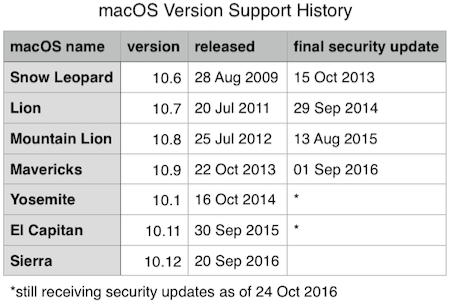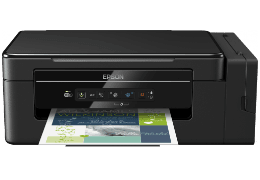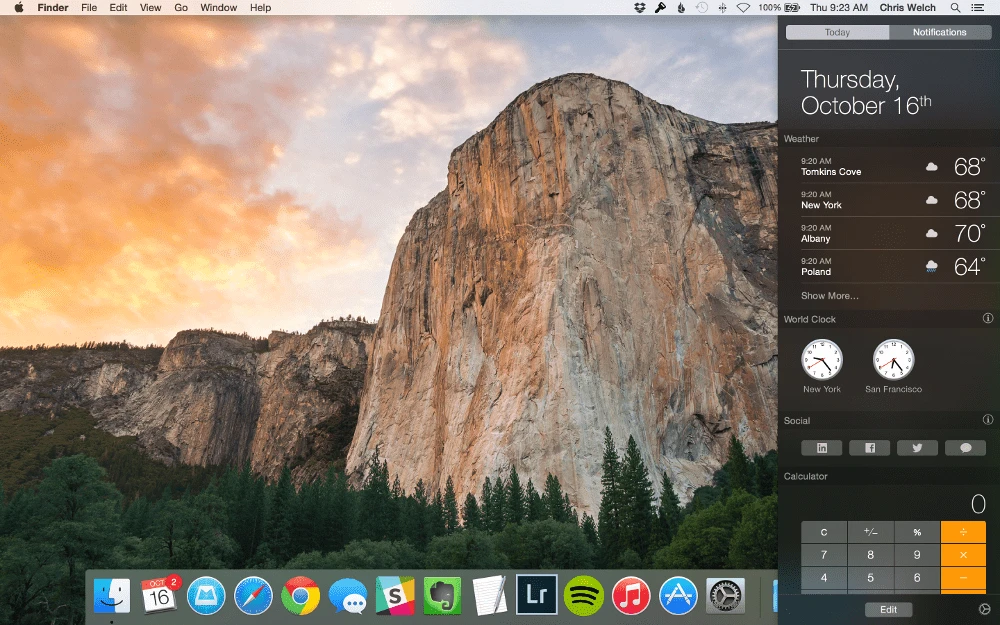Oct 13, 2014 And good luck with the OS X (10.10) Yosemite upgrade! UPDATE: The new Yosemite is really slick. It took me about 20 minutes to update my 2011 & 2008 machine. Yes, my old late 2008 Macbook Pro was available for the update for free. What I noticed when I went to download was the warning tell me what the actual space requirements were for. If you already have macOS 10.12 Sierra, OS X 10.11 El Capitan, or OS X 10.10 Yosemite on your X220 we recommend a clean installation of macOS 10.13 High Sierra, not an update from the existing installation. See the guide here to install macOS 10.12 Sierra on the ThinkPad X220.
'Can I still upgrade to El Capitan though the official update is outdated?' 'How do I upgrade to El Capitan? I'm using Yosemite, is there a way that can upgrade Yosemite to El Capitan?'

On this page, we collected the complete process of how to upgrade to Mac OX S El Capitain 10.11.6 without losing any data. Follow this guide, you can download and install Mac OS X 10.11.6 on your computer with ease:
- Check If Your Mac Is Available for El Capitan Update
- Prepare Mac Ready Before El Capitan Update
- Update Mac OS X to El Capitan (Download OS X 10.11.6)
- Bonus Tip: Restore lost data after El Capitan update (without backups)
Tips on this page also work to upgrade macOS Mojave, High Sierra to the latest macOS Big Sur. You may also interest in: update and install macOS.
What Is Mac OS X El Capitan
El Capitan, the last edition known as Mac OS X 10.11.6, is an operating system between Yosemite and macOS Sierra, released on July 18, 2015.
Here is a list of new features that Mac OS X 10.11.6 brings to most old Mac OS X users. And you may feel like downloading and installing the system on your Macs:
- Support multitask
- Better performance
- Better user experience
- Free download
So how to download or upgrade your Mac computer to El Capitan? Follow through the guides, any one of Mac users can make it.
1. Check If Your Mac Is Available for El Capitan Update
Before you take steps to update your present Mac OS X to El Capitan 10.11.6/10.11.2, check whether your Mac computer is available to download and install the new El Capitan. Check the below list and see whether your device or OS X can get the new update:
Supported Mac devices:
- iMac (Mid 2007 or newer)
- MacBook (Late 2008 Aluminum, Early 2009, or newer)
- MacBook Pro (Mid 2007 or newer)
- MacBook Air (Late 2008 or newer)
- Mac mini (Early 2009 or newer)
- Mac Pro (Early 2008 or newer)
- Xserve (Early 2009)

Available OS X for El Capitan:
- OS X Yosemite v10.10
- OS X Mavericks v10.9
- OS X Mountain Lion v10.8
- OS X Lion v10.7
- Mac OS X Snow Leopard v10.6.8
If your Mac OS X and devices are just right on the list, read on and follow tips to prepare your Mac OS ready for El Capitan update.
2. Prepare Mac Ready Before El Capitan Update
Let's see what you should do to prepare your Mac devices fully ready for the new El Capitan 10.11.6, etc. update. And if this is your first time updating Mac OS X, follow the tips below carefully:
#1. Hardware Requirement
- Leave at least 2GB memory and 8.8 GB of storage space on Mac
- Leave at least 45% battery on Mac
- Connect Mac to the internet or WiFi
- Update your Mac Apps to the latest versions
#2. Back Up All Important Mac Data (to An External Disk)
It's vitally important to back up important data on Mac to external storage devices, which will certainly help to avoid data loss issues due to Mac OS X update.
To do so, you have two options:
- Option 1. Back up all your data via Time Machine
- 1. Connect an external hard drive to Mac.
- 2. Click the Apple menu icon, click 'System Preference', and click 'Time machine'.
- 3. Click 'Select Backup Disk...' and choose the external drive as a backup disk.
- Option 2. Fully back up your Mac data via reliable Mac backup software
For a step-by-step guide, please follow: How to Back Up Mac without Time Machine for help.
If you have forgotten to backup data, reliable Mac data recovery software like EaseUS Data Recovery Wizard is the best tool to help you restore lost data.
So now, you can follow the next tutorial tips to update your present Mac OS X into El Capitan.
3. Update Mac OS X to El Capitan (Download OS X 10.11.6)
You can update your Mac OS X to El Capitan now. Follow the below guide to update to El Capitan with ease:
#1. Download and Install Mac OS X from Mac App Store
Step 1. Go to Mac App Store and search El Capitan.
Step 2. Click the Download button for El Capitan.
Step 3. Click Continue and follow the instructions to install El Capitan on your Mac.
#2. Manually Download El Capitan 10.11.6 from Apple
Here you can also download El Capitan or other new versions of macOS from the Apple support page, and install on your Mac:
When the downloading process is finished, the El Capitan installer will launch automatically. All you just need to follow the onscreen guide to install the Mac OS X 10.11.6 on your Mac computer.
Note that the El Capitan upgrade process will not take long. Just wait patiently to let the El Capitan installation process accomplish on your Mac.
You May Also Interest In:
Don't worry if you meet some problems during the Mac OS X or macOS update process. Click the below troubleshooting guide and follow to resolve the respective issue on your own.
When you encounter macOS update stuck, macOS or Mac OS X update failed, stay calm. Follow this guide to install the desired macOS or Mac OS X on your Mac.
Bonus Tip: Restore Lost Data after Upgrading Mac to El Capitan 10.11.6
If you didn't create backups before the Mac OS X El Capitan update, and you lost some important Mac files after the update process, your last chance is to turn to reliable Mac data recovery software for help.
Here, EaseUS Data Recovery Wizard for Mac is available for you to download and restore all lost files after macOS or Mac OS X update.
This software is fully compatible with all Mac OS X such as El Capitan, Yosemite, Mavericks, and the latest new macOS Mojave, High Sierra, etc.
Download it and follows to restore lost data due to the El Capitan update now:
Step 1. Where was data lost after operating system update? Choose the location and click Scan.
Step 2. EaseUS Data Recovery Wizard for Mac will immediately scan your selected disk volume and display the scanning results on the left pane.
Step 3. After the scan, select the target files that were unknowingly lost during or after the update and click Recover Now button to get them all back.
What Else Can EaseUS Data Recovery Wizard Do for You?
Besides macOS update file recovery, EaseUS Data Recovery Wizard dedicates to restoring lost data for Mac users under complex circumstances, such as:
- Data deletion
- Mac hard drives formatting
- Storage device corruption
- Mac system crash
- Mac OS X reinstallation
El Capitan Still Works on Old Macs, Go and Get It Now
Don't worry if your Mac computer is not available for updating to Mac OS X El Capitan. Follow this page, you'll see if your computer can install this operating system.
If yes, follow to download and install this excellent system and renew your Mac computer now. Don't worry if you lost some files during the process, EaseUS Data Recovery Wizard for Mac can bring your files back.
Now, it's your turn. Go and get it now.
:max_bytes(150000):strip_icc()/006-browser-and-security-updates-for-safari-446556-5f9133263c5949838365627dab916289.jpg)
Let’s Download MacOS High Sierra Image File for Virtualbox & VMware, however, the current Apple OS is MacOS Catalina 10.15 that announced and released in 2019, besides that, macOS Mojave 10.14 is also the greatest operating system having tons of feature But still, MacOS High Sierra 10.13.6 is in high demand and legions of people are installing MacOS High Sierra on Macbook, Mac Mini.
Let’s Download MacOS High Sierra Image File for Virtualbox & VMware, however, the current Apple OS is MacOS Catalina 10.15 that announced and released in 2019, besides that, macOS Mojave 10.14 is also the greatest operating system having tons of feature But still, MacOS High Sierra 10.13.6 is in high demand and legions of people are installing MacOS High Sierra on Macbook, Mac Mini, Hackintosh, or Virtual Machines like Virtualbox and Vmware.
Users can’t install any Mac OS in Windowsor Linux, only they can install it on different versions of Mac computers although Mac doesn’t allow Windows and Linux to install Mac Operating systems inside the host computer. Therefore, thanks to virtualization software to give users the best platforms to install any Mac operating systems as a guest OS. it means you can run multiple operating systems on a single computer. the handy software for user is Virtualboxand VMwarethat have several useful features, due to that, Windows and Linux users can test MacOS High Sierra on Virtual machines.
You know Virtual machines allow you to install any guest operating systems but for that, you need to download its image file for Virtualbox and Vmware then you can install it. Therefore, you have to download MacOS High Sierra Image File and you will get the direct link from this article. However, you can use the MacOS High Sierra VMDK file to install it. So, you will find the download link on Google Drive and MediaFire servers, the file is safe and secure from malware and viruses, in this case, we have saved the file on google drive and Mediafire.
Before moving on, I request you all and I need your beautiful support please like the Techbland Facebook page for more product updates.
Related Articles:
Table of Contents
Mac Os X Yosemite Virtualbox Image Download Windows 10
What is the Current Version of MacOS High Sierra?
MacOS High Sierra is the fourteen major release of Apple and Apple announced MacOS 10.13 on the World Wide Developer Conference on September 25, 2017. Apple added several features on Mac OS 10.13 like new core technologies, including totally a new file system called APFS, better Graphics and VR, iCloud file sharing, Automatic reader mode, and many more handy features.
So, the MacOS High Sierra beta version has several errors that the user faced, later on, Apple released the MacOS High Sierra new update called 10.13.1 and they fixed several bugs on the new update although the current version of macOS High Sierra is 10.13.6. Moreover, Apple has added many new updates and features to the latest version.
Therefore, if you have MacOS High Sierra on Macbook or Virtual Machines then go to System Preferences -> Software Update and check for the new update if the update is available then update your MacOS High Sierra to the latest version.
MacOS High Sierra Handy Features
- A New Brand File System
- Better Graphics performance and VR
- Safari knows when to close
- Backward Compatibility
- Safari Privacy Protection
- Persistent Website Customization
- You can edit photos with new Editing Features
- Mail Upgrades
- Notes Tweaks
- The new update to Spotlight
- iCloud File Sharing
- Updated Security
Related Articles:
Download MacOS High Sierra Image File
Those users who are here to download MacOS High Sierra Virtualbox and Vmware image file, So, they can download it from the below links. it is time to download MacOS High Sierra ISO file for Virtual machines and use it for installation.
As I mentioned the download links will be on Google Drive and MediaFire then you will download it from there. Remember, while downloading the download file from google drive then you might see the warning notification which is google drive download limit exceeded quota error. So, you will need to fix it in order to complete the download process. Don’t worry, you can fix google drive download limit error.
Download MacOS High Sierra Image File:
- MacOS High Sierra Final File (Download Google Drive File)
- MacOS High Sierra (Download Google Drive 6 of 6 Parts)
- Or MacOS High Sierra Final File (Download MediaFire File)
- MacOS High Sierra (Download MediaFire 6 of 6 Parts)
- Download WinRARor 7ZIPsoftware because the file is compressed and you will need to extract it with WinRAR or 7ZIP software.
Install MacOS High Sierra on Virtualbox on Windows
Once you download the MacOS High Sierra file then you can install it on Virtualbox, the installation is quite complicated but you can do it with few steps. To install High Sierra you have to download and install Virtualbox on Windows or Linux in case you are Linux user. After that, you will need to create a virtual machine for MacOS High Sierra and customize the VM. finally, complete the installation. Moreover, if you need the installation steps then follow the below article.
Download Mac Os X Yosemite Iso
Install MacOS High Sierra on VMware on Windows
In case, you like to use Vmware and you have much information about Vmware Workstation. Then you can install MacOS High Sierra on Vmware on Windows. However, Vmware is much better than Virtualbox because of several features and tools that help you to get better performance. Therefore, download VMware workstation and create a new virtual machine for macOS High Sierra. Later on, edit the virtual machine and install it on VMware. Moreover, you can check the below article to get the installation steps.
Read Next:
Mac Os X Yosemite Virtualbox Image Download
Conclusion
That’s all about MacOS High Sierra downloading file and installation guide. Therefore, if you get any error related to download file then please let us know. Moreover, if you like our article then please give your positive feedback.
Check compatibility
You can upgrade to OS Yosemite on any of the following Mac models. Your Mac also needs at least 2GB of memory and 8GB of available storage space.
Update Os X Yosemite 10.10.5 To 10.13
MacBook introduced in 2009 or later, plus MacBook (13-inch, Aluminum, Late 2008)
MacBook Air introduced in late 2008 or later
MacBook Pro introduced in mid 2007 or later
Mac mini introduced in early 2009 or later
iMac introduced in mid 2007 or later
Mac Pro introduced in early 2008 or later
Xserve models introduced in early 2009
To find your Mac model, memory, storage space, and macOS version, choose About This Mac from the Apple menu . If your Mac isn't compatible with OS X Yosemite, the installer will let you know.

Make a backup
Mac Os Download For Virtualbox
Before installing any upgrade, it’s a good idea to back up your Mac. Time Machine makes it simple, and other backup methods are also available. Learn how to back up your Mac.
Mac Os X Yosemite Features
Get connected
It takes time to download and install OS X, so make sure that you have a reliable Internet connection. If you're using a Mac notebook computer, plug it into AC power.
Download OS X Yosemite
For the strongest security and latest features, find out whether you can upgrade to macOS Catalina, the latest version of macOS.
If you still need OS X Yosemite, use this link: Download OS X Yosemite. A file named InstallMacOSX.dmg will download to your Mac.
Install the macOS installer
Double-click the downloaded file to open a window showing its contents. Then double-click the file within, named InstallMacOSX.pkg.
Follow the onscreen instructions, which will guide you through the steps necessary to install.
Begin installation
Mac Os X Yosemite Virtualbox Image Download Windows 10
After installation of the installer is complete, open the Applications folder on your Mac, then double-click the file named Install OS X Yosemite.
Os X Yosemite Update To 10.13 Free
Click Continue and follow the onscreen instructions. You might find it easiest to begin installation in the evening so that it can complete overnight, if needed.

Allow installation to complete
Please allow installation to complete without putting your Mac to sleep or closing its lid. Your Mac might restart, show a progress bar, or show a blank screen several times as it installs both OS X and related updates to your Mac firmware.
Mac Os X Yosemite Update
Learn more
Os X 10.10.5 Yosemite Download
Virtualbox Mac Os X Vbox Download
Os X Yosemite Update 10.11
- OS X Yosemite won't install on top of a later version of macOS, but you can erase your disk first or install on another disk.
- You can use macOS Recovery to reinstall macOS.